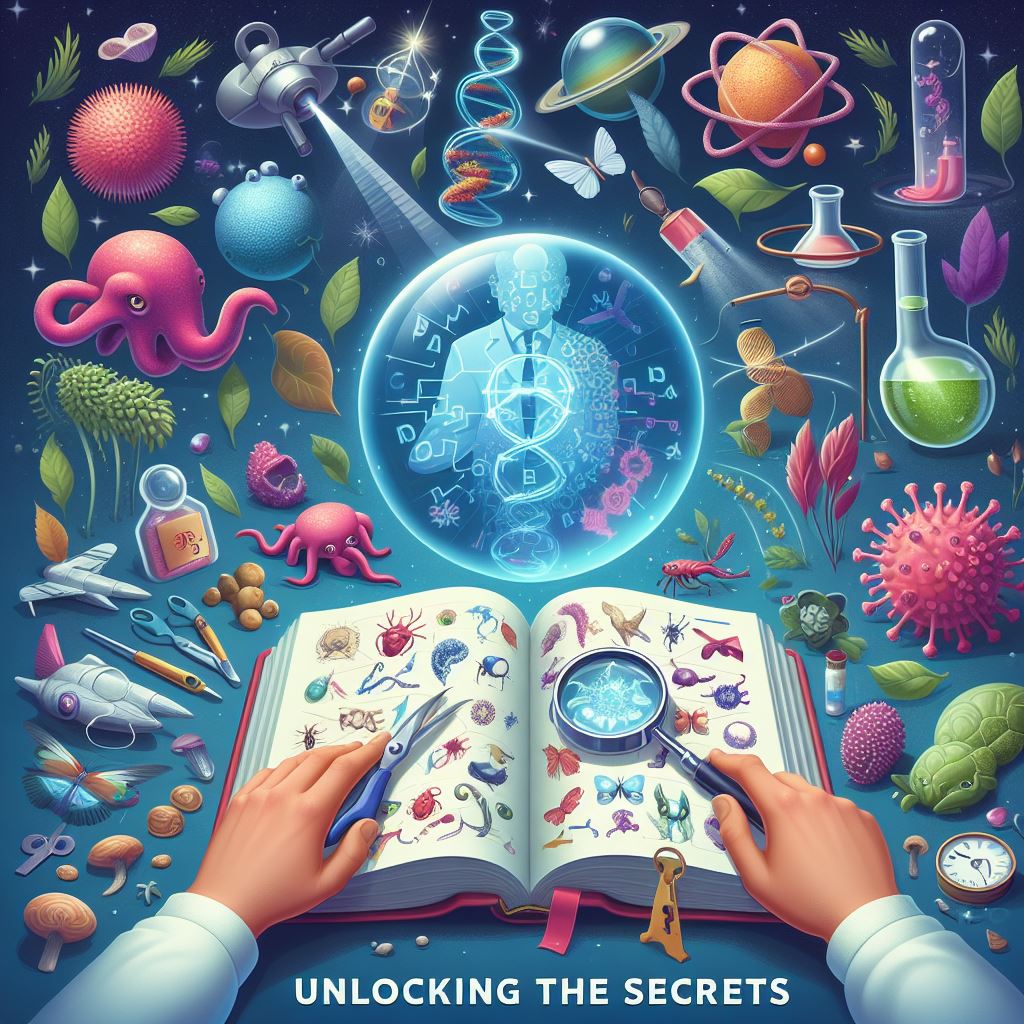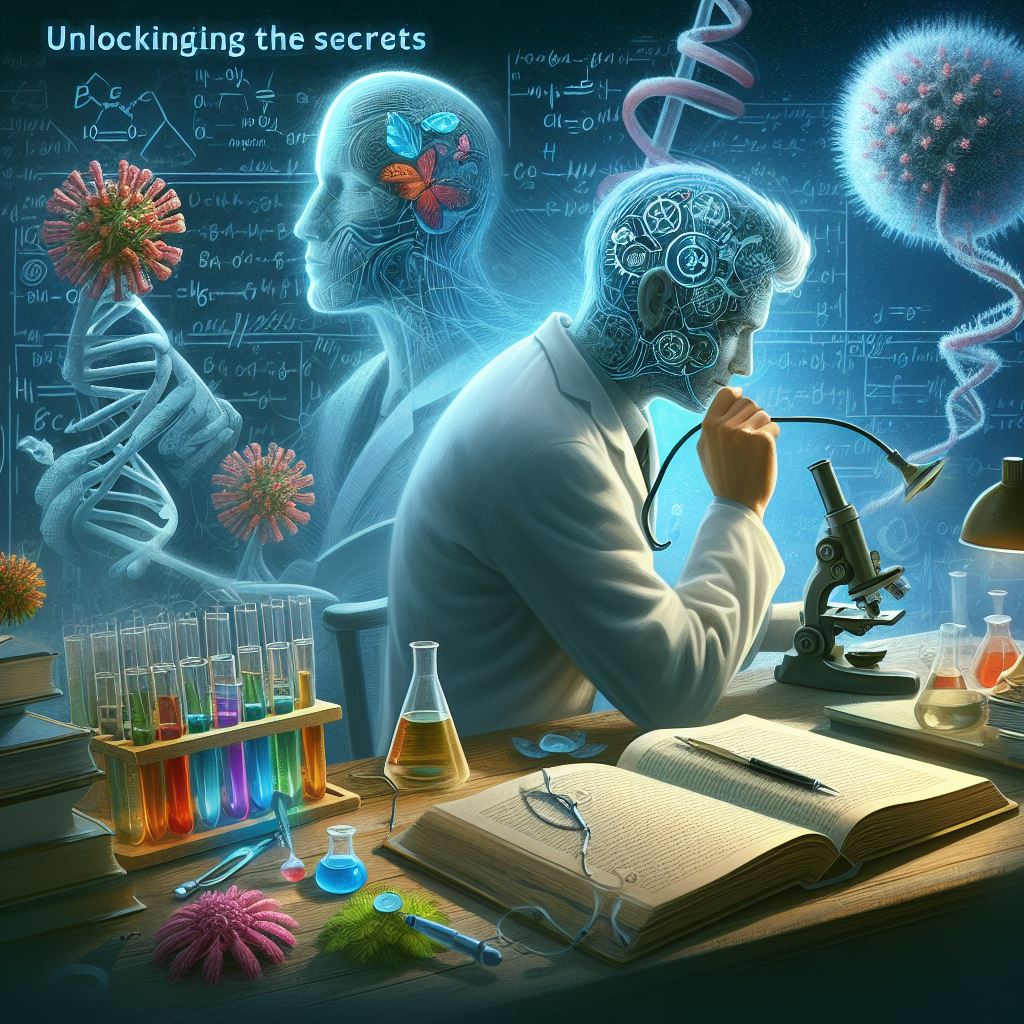Introduction
Welcome to the fascinating world of mastering biology! Whether you’re a student embarking on your biology journey or someone simply intrigued by the wonders of life, this guide is your key to unlocking the secrets of the natural world. From understanding the basics to diving deep into advanced concepts, let’s embark on this enriching journey together.
Exploring the Fundamentals of Biology
Embark on an exciting journey as you explore the fundamental principles of biology. At its core, biology is about understanding life in all its forms, from the smallest single-celled organisms to the glorious diversity of plants and animals that inhabit our planet.
Think of biology as a great puzzle, each piece representing a unique aspect of life. As you explore this complex puzzle, you’ll uncover the building blocks of life itself: the cell. These microscopic units are the foundation upon which all living things are built. From the simplest bacteria to the most complex organisms, cells serve as the basic unit of life, performing essential functions that keep organisms alive and thriving.
But biology is not just about studying individual cells; It is a matter of understanding how these cells combine to form organisms, ecosystems and ultimately the biosphere. Every living thing is intricately connected, each organism plays an important role in the web of life.
By grasping the basic concepts of biology, you lay a solid foundation for uncovering the mysteries of the natural world. Whether you’re interested in genetics, ecology or evolution, a deep understanding of biology gives you the tools to explore these complex topics with confidence and curiosity.
So, let your curiosity be your guide as you embark on this journey of discovery. With each new concept you learn and discovery you will gain a deeper appreciation for the beauty and complexity of life on Earth.

Unraveling the Mysteries of Genetics
Let’s take a plunge into the fascinating realm of genetics, where we’ll uncover the mysterious secrets hidden within the strands of our DNA. Genetics serve as life’s blueprint, dictating everything from our physical characteristics to our susceptibility to certain diseases.
At the heart of genetics is the concept of inheritance—the transfer of genetic information from one generation to the next. By studying inheritance patterns, scientists have unraveled the mystery of how traits are passed from parents to offspring.
Genetic variation, another foundation of genetics, is the driving force behind variation within species. This makes each person unique, contributing to differences in appearance, behavior and disease susceptibility. By exploring genetic variation, we gain insight into the rich tapestry of life and the endless possibilities encoded within our genes.
But genetics is not just about understanding the diversity of life; It is also about deciphering the underlying mechanisms that govern traits and characteristics. From the intricate dance of alleles to the intricate interplay of genes and environment, genetics provides us with a window into the inner workings of life.
Understanding genetics is crucial to understanding the complexity of life and evolution. It allows us to trace the evolutionary journeys that have shaped the diversity of life on Earth and provides invaluable insight into the processes that drive evolutionary change.
So, let’s embark on this journey of genetic exploration, where we will uncover the secrets hidden within our DNA and unlock the keys to heredity. By delving into the fascinating world of genetics, we gain a deeper appreciation for the wonder of life and the extraordinary diversity that surrounds us.
Navigating the Diversity of Life
Let’s embark on a wondrous journey through the intricate tapestry of life that blankets our planet. From the tiniest single-celled bacteria to the astonishing complexity of multicellular organisms, Earth harbors an astonishing array of life, each uniquely adapted to its environment.
Biology, the science of life, invites us to explore this vast diversity and uncover the beauty of biodiversity. Biodiversity refers to the variety of life found in a particular habitat or ecosystem, which includes not only the variety of species but also the genetic diversity within species and the diversity of ecosystems.
As we journey through the natural world, we encounter an astonishing array of organisms, each a masterpiece of adaptation and evolution. From the microscopic world of bacteria and protists to the towering majesty of ancient trees, every organism plays an important role in the complex web of life.
Studying biodiversity gives us a window into the interconnectedness of all living things. Every species, no matter how small or seemingly insignificant, contributes to ecosystem functioning and biosphere stability. From the oxygen we breathe to the food we eat, our lives are intertwined with the rich tapestry of life on Earth.
But biodiversity is more than just a scientific concept—it’s a source of wonder and inspiration. The sheer diversity of life forms, each finely adapted to its environment, is a testament to the creativity of evolution and the resilience of life itself.
So let’s travel with open minds and open hearts, explore the wonders of biodiversity and gain a deeper appreciation for the interconnectedness of all living things. By studying biodiversity, we not only expand our knowledge of the natural world but also develop a deeper respect for the beauty and complexity of life on Earth.

Investigating Ecosystem Dynamics
Let’s dive deeper into the complex network of interactions that underpin life on our planet. Ecosystems, complex webs of life that span from lush rainforests to barren deserts, are the engines that drive species to survive and thrive.
Picture yourself standing in the heart of a vibrant rainforest, surrounded by towering trees, foliage, and a bevy of wildlife. This ecosystem is a hub of activity, where plants, animals and microorganisms interact in a delicate dance of life. Every organism plays an important role, from the towering canopy trees that provide shelter and food for countless species to the tiny insects that pollinate flowers and recycle nutrients.
But ecosystems come in all shapes and sizes, from the lush rainforests of the Amazon to the harsh deserts of the Sahara. Despite their differences, all ecosystems have one common feature: they are dynamic and ever-changing. Ecosystem dynamics regulate the flow of energy and nutrients, shape the landscape, and influence the distribution of organisms.
In a rainforest, for example, energy flows from the sun to plants through photosynthesis, then through the food chain as animals consume plants and other animals. As organic matter decomposes and returns to the soil, nutrients cycle through the ecosystem, sustaining new plant growth and life.
But this delicate balance can easily be disrupted by human activities such as deforestation, pollution and climate change. When ecosystems are disrupted, species may struggle to survive, leading to reduced biodiversity and ecological decline.
By studying ecosystems, we gain a deeper appreciation for the interconnected nature of life. We understand the complex relationships that govern species survival and ecosystem resilience in the face of change. Ultimately, by protecting ecosystems and protecting biodiversity, we ensure a healthy planet for future generations.

Mastering Cellular Biology
Let’s embark on a fascinating journey into the microscopic realm of cells – the building blocks of life. In every living organism, from the smallest bacteria to the most complex multicellular organisms, the cell is the basic unit that performs the essential functions required for life.
When we enter the world of cellular biology, we uncover the extraordinary complexity hidden within each cell. Cells come in many different shapes and sizes, each adapted to its specific role in the organism. From the spherical shape of red blood cells to the elongated structure of muscle cells, the diversity of cells reflects the diversity of life.
But what exactly makes a cell? At its core, a cell is composed of various organelles, each with its own specialized function. The nucleus acts as the command center, housing the cell’s genetic material and directing cellular activities. Mitochondria are the powerhouses of the cell, generating energy through the process of cellular respiration. Chloroplasts found in plant cells are responsible for photosynthesis—the process by which plants convert sunlight into energy.
Cellular biology not only explores the structure of cells but also their function. Every cell is a hive of activity, where complex biochemical processes take place every moment. From protein synthesis to DNA replication, cells work constantly, performing tasks essential to life.
One of the most essential processes in cellular biology is cellular respiration, which converts glucose and oxygen into energy, carbon dioxide and water. This process fuels cell activity, providing the energy needed for growth, repair and reproduction.
On the other hand, photosynthesis is the process by which plants use sunlight to produce glucose and oxygen. This vital process not only sustains plant life but also provides oxygen for animals to breathe, highlighting the interconnectedness of all living things.
By mastering the intricacies of cellular biology, we unlock the secrets of life itself. Understanding the structure and function of cells allows us to appreciate the complexity of living organisms and provides insight into the fundamental processes that sustain life on Earth.
Understanding Evolutionary Principles
Let’s embark on a fascinating journey through time to trace the evolutionary paths that have sculpted the breathtaking diversity of life on Earth. Evolution, the cornerstone of modern biology, provides us with deep insight into the origins of life and the processes that have shaped the natural world as we know it.
At the heart of the theory of evolution are several key processes that cause change over generations. Natural selection, proposed by Charles Darwin, is perhaps the most well-known of these processes. It works through differential survival and reproduction, whereby individuals with advantageous traits are more likely to survive and pass on their genes to the next generation. Over time, this leads to a gradual adaptation of populations to their environment, as advantageous traits become more common and less favorable traits are selected for.
Another important process in evolution is genetic drift, which refers to random fluctuations in allele frequencies within a population. Unlike natural selection, genetic drift is not driven by adaptive values of traits but occurs by chance, such as genetic mutations or random fluctuations in population size. Although genetic drift can have significant effects on small populations, its effects are generally less pronounced in larger populations.
Speciation, the process by which new species arise, is another interesting aspect of evolution. This occurs when populations become reproductively isolated from each other, causing genetic differences to accumulate over time. This can occur through various mechanisms, such as geographic isolation, behavioral differentiation, or genetic divergence. Over time, these differences can accumulate to the point where individuals from different populations are no longer able to interbreed, resulting in the formation of distinct species.
By studying evolution, we can gain a deeper understanding of the extraordinary history of life on our planet. From the earliest single-celled organisms to the complex array of plants, animals and fungi inhabiting the Earth today, every living organism is evidence of the power of the evolutionary process. Evolutionary principles provide a framework for understanding the interconnectedness of all living things and provide insight into the forces that have shaped the natural world over billions of years.
FAQs
- What is biology?
Biology is the scientific study of life and living organisms. - Why is mastering biology important?
Mastering biology is crucial for understanding the natural world and addressing pressing global challenges, such as climate change and biodiversity loss. - How can I improve my understanding of genetics?
To improve your understanding of genetics, consider enrolling in online courses, joining study groups, and seeking guidance from knowledgeable mentors. - What role does biology play in everyday life?
Biology influences every aspect of our daily lives, from the food we eat to the medicines we take. Understanding biology helps us make informed decisions and lead healthier lives. - What are some career opportunities in biology?
Career opportunities in biology are diverse and include fields such as medicine, research, environmental conservation, and biotechnology. - How can I contribute to biodiversity conservation?
You can contribute to biodiversity conservation by supporting conservation efforts, practicing sustainable living, and raising awareness about the importance of preserving natural habitats.
Embark on your journey of mastering biology with curiosity and enthusiasm. By delving into the intricacies of life, you gain a deeper appreciation for the wonders of the natural world. Remember, biology is not just a subject—it’s a window into the beauty and complexity of life itself.


